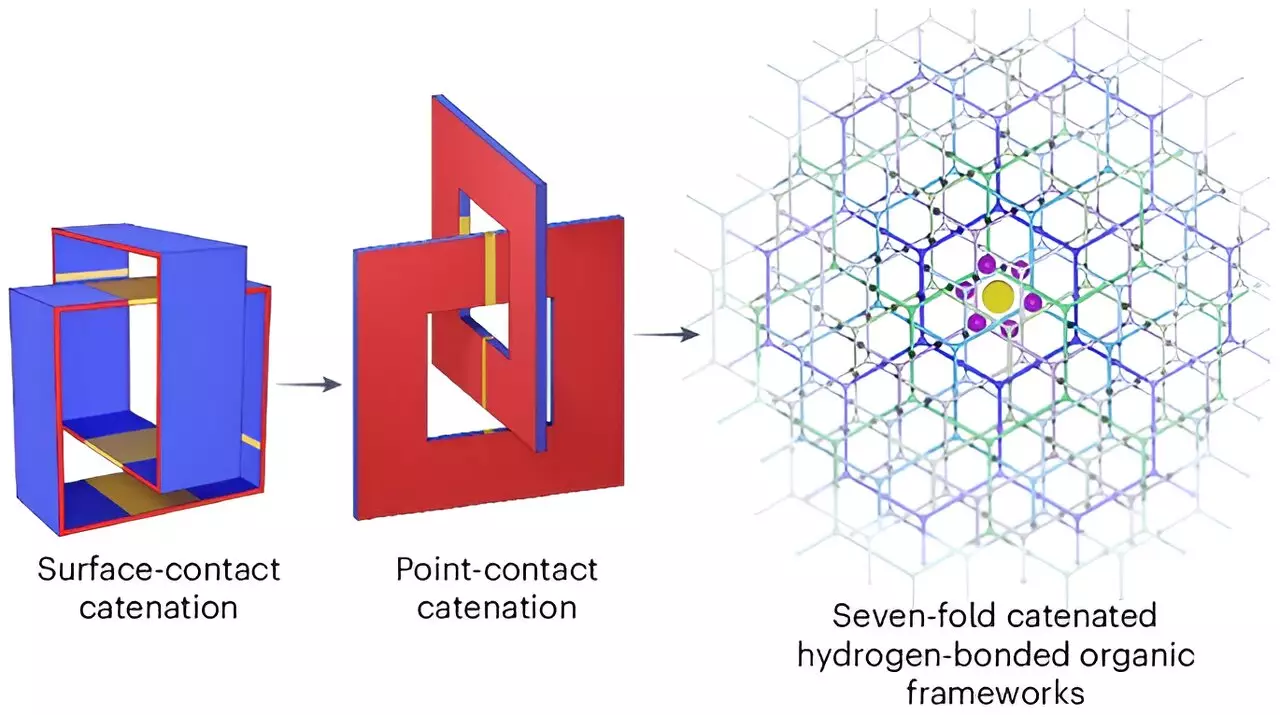Hydrogen is heralded as a potential game-changer in the quest for sustainable energy solutions, enabling cleaner fuel options and reducing reliance on fossil fuels. However, despite its environmental benefits, hydrogen storage remains a major limitation. Unlike gasoline, hydrogen gas occupies a far greater volume, creating significant logistical challenges. As efforts to harness hydrogen gain momentum, researchers worldwide are directed towards finding effective solutions for hydrogen storage that align with modern energy demands.
A breakthrough study published in the prestigious journal *Nature Chemistry* highlights the concerted efforts of chemists from the University of Hong Kong, Northwestern University, and Duke University. This interdisciplinary team has developed a supramolecular material capable of compressing hydrogen in a lightweight format. Their innovative approach utilizes porous organic crystals that are specifically designed to enhance hydrogen storage capabilities.
The cornerstone of this research lies in the strategic arrangement of organic molecules that form robust, honeycomb-like crystalline structures. The careful configuration of these crystals creates pores optimized for hydrogen molecules, enabling high-density storage while maintaining structural integrity.
The research stands out not only for its innovative material design but also for its alignment with the U.S. Department of Energy’s stringent targets for hydrogen storage. The team successfully achieved a storage capacity of 53.7 grams of hydrogen per liter of material utilized, exceeding the minimum requirement of 50 grams. Furthermore, the hydrogen content constituted 9.3% of the total system weight, surpassing the 6.5% target, a feat that had eluded previous attempts by researchers in the field.
This accomplishment is remarkable, especially in light of the challenges presented by competing materials that often fail to achieve both efficiency and lightweight criteria. Their new supramolecular material emerges as a reliable alternative, believed to enhance practical applications of hydrogen as an energy carrier.
The Road Ahead: Challenges and Considerations
However, the journey toward mainstream adoption of this novel hydrogen storage solution is not without hurdles. One notable limitation of the proposed system is its requirement for cryogenic cooling to maintain optimal conditions for hydrogen storage. This necessity raises concerns about the practicality and cost-effectiveness of implementing such systems on a commercial scale. The bulky nature of cryogenic technology could hinder its integration into current infrastructures, posing a serious barrier for industry stakeholders.
As the field of hydrogen energy continues to evolve, further research and development are essential to overcoming these obstacles, fostering advancements that could make hydrogen storage systems both efficient and economically viable. The potential benefits of efficient hydrogen storage extend beyond technology; they are pivotal to achieving a sustainable energy future, where hydrogen can play a crucial role.
The collaborative efforts of researchers from these esteemed institutions represent a decisive step forward in hydrogen storage technology. By achieving critical benchmarks in storing hydrogen within lightweight materials, they have laid the foundation for future innovations. Addressing existing challenges while building upon these advancements is vital for realizing the full potential of hydrogen as a clean energy source. As we push the boundaries of material science, the dream of a hydrogen-powered future inches closer to reality.


Leave a Reply